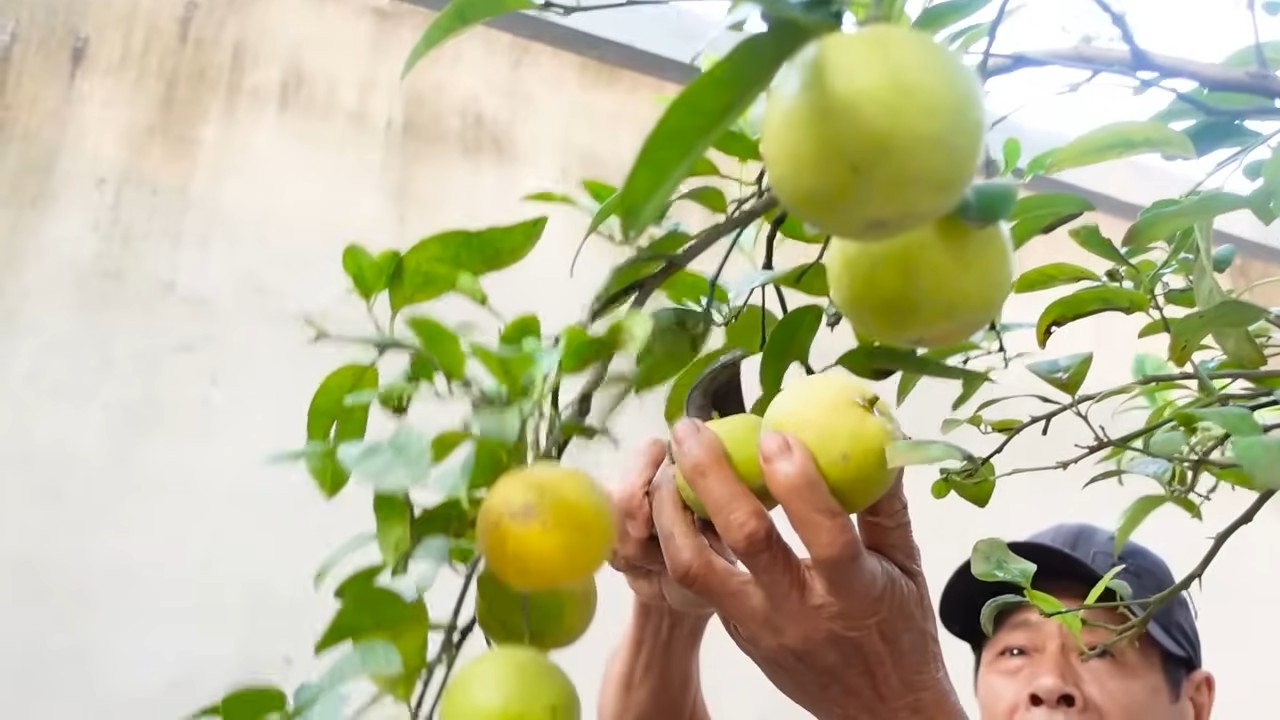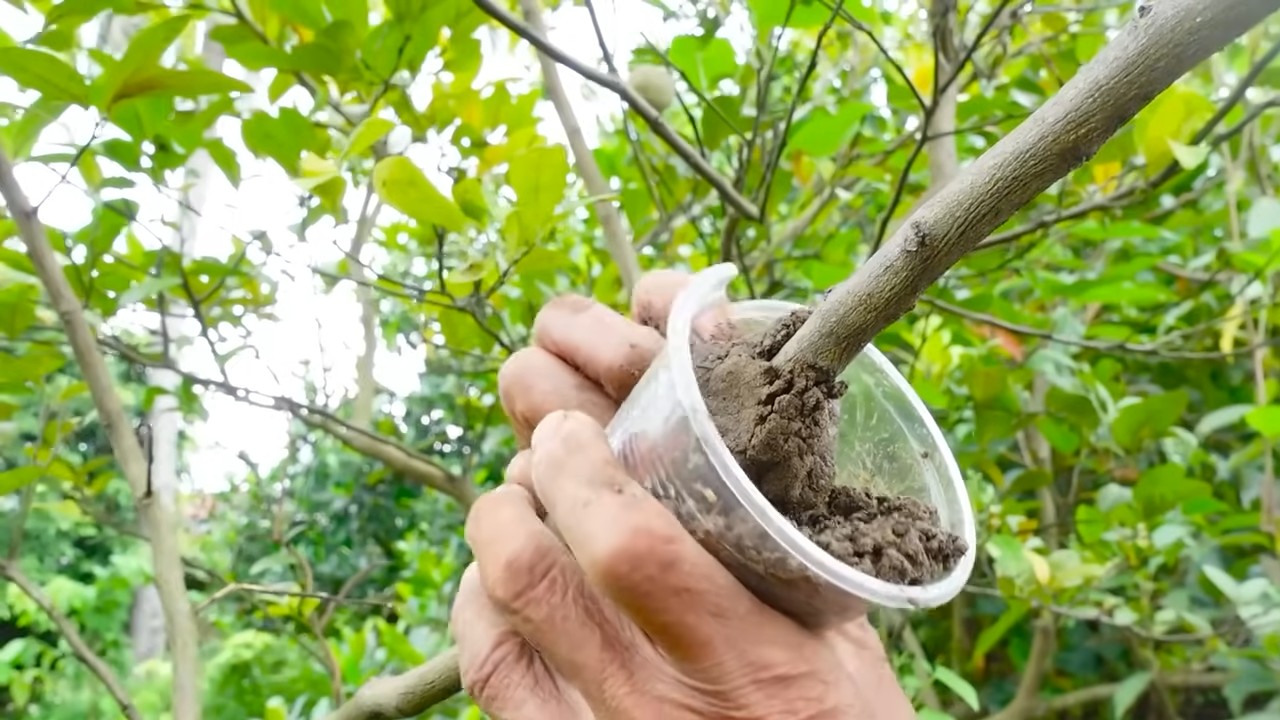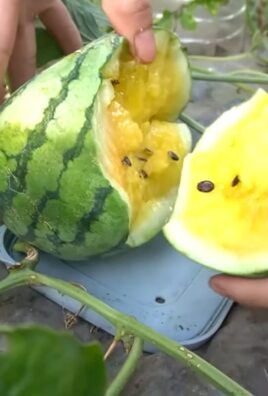Grow lemons year round? Imagine stepping into your garden in the dead of winter and plucking a bright, juicy lemon straight from the tree! Sounds like a dream, right? Well, it doesn’t have to be! For centuries, citrus cultivation has been a symbol of prosperity and sunshine, dating back to ancient civilizations who prized these golden fruits. But let’s face it, not everyone lives in a sunny, Mediterranean climate. That’s where these amazing DIY tricks come in!
I’m here to share some simple, yet effective, home gardening hacks that will help you grow lemons year round, no matter where you live. Whether you’re battling frost, limited sunlight, or just a lack of space, these tips will empower you to enjoy the tangy zest of homegrown lemons whenever you desire. Forget those expensive, store-bought lemons – with a little know-how and some clever DIY solutions, you can have a thriving lemon tree providing you with fresh fruit all year long. So, grab your gardening gloves, and let’s get started on this exciting journey to year-round lemon bliss!

Zitronen das ganze Jahr über selbst anbauen: Ein umfassender DIY-Leitfaden
Hallo liebe Gartenfreunde! Habt ihr euch jemals gewünscht, das ganze Jahr über frische, sonnengereifte Zitronen direkt von eurem eigenen Baum pflücken zu können? Ich auch! Und ich habe herausgefunden, dass es mit ein wenig Planung und den richtigen Techniken absolut machbar ist, auch wenn ihr nicht gerade in einem tropischen Klima wohnt. In diesem Artikel zeige ich euch, wie ihr eure eigenen Zitronen das ganze Jahr über anbauen könnt. Lasst uns loslegen!
Die Grundlagen: Was Zitronenbäume zum Gedeihen brauchen
Bevor wir uns in die Details stürzen, ist es wichtig zu verstehen, was Zitronenbäume wirklich brauchen, um glücklich und produktiv zu sein. Hier sind die wichtigsten Faktoren:
* Sonnenlicht: Zitronenbäume lieben die Sonne! Sie brauchen mindestens 6-8 Stunden direktes Sonnenlicht pro Tag.
* Boden: Gut durchlässiger, leicht saurer Boden (pH-Wert zwischen 6,0 und 7,0) ist ideal. Staunässe ist der Feind!
* Wasser: Regelmäßige Bewässerung ist wichtig, besonders während der Wachstumsperiode. Aber übertreibt es nicht!
* Temperatur: Zitronenbäume sind frostempfindlich. Temperaturen unter dem Gefrierpunkt können sie schädigen oder sogar töten.
* Düngung: Regelmäßige Düngung mit einem Zitrusdünger versorgt den Baum mit den notwendigen Nährstoffen.
* Schutz: Schutz vor Wind und extremen Wetterbedingungen ist wichtig, besonders für junge Bäume.
Die richtige Sorte wählen: Nicht alle Zitronen sind gleich
Es gibt viele verschiedene Zitronensorten, und einige sind besser geeignet für den Anbau in bestimmten Klimazonen als andere. Hier sind einige beliebte Optionen, die sich gut für den Anbau im Topf eignen und tendenziell das ganze Jahr über Früchte tragen:
* Meyer Zitrone: Diese Sorte ist bekannt für ihre Süße und Saftigkeit. Sie ist auch relativ kältetolerant.
* Improved Meyer Zitrone: Eine verbesserte Version der Meyer Zitrone, die widerstandsfähiger gegen Krankheiten ist.
* Lisbon Zitrone: Eine klassische Zitrone mit einem sauren Geschmack. Sie ist sehr produktiv.
* Eureka Zitrone: Eine weitere beliebte Sorte mit einem sauren Geschmack. Sie ist bekannt für ihre lange Erntezeit.
* Ponderosa Zitrone: Diese Sorte produziert sehr große Früchte, die bis zu 2 kg schwer werden können. Sie ist eher eine Zierpflanze, aber die Früchte sind essbar.
Ich persönlich habe mit der Meyer Zitrone sehr gute Erfahrungen gemacht. Sie ist relativ einfach zu pflegen und liefert köstliche Früchte.
Schritt-für-Schritt-Anleitung: Zitronenbaum im Topf pflanzen
Wenn ihr nicht in einem Klima wohnt, in dem Zitronenbäume das ganze Jahr über im Freien überleben können, ist der Anbau im Topf die beste Option. So könnt ihr euren Baum bei Bedarf leicht ins Haus holen.
1. Den richtigen Topf auswählen: Wählt einen Topf mit einem Durchmesser von mindestens 45 cm und guter Drainage. Terrakotta-Töpfe sind eine gute Wahl, da sie atmungsaktiv sind und helfen, Staunässe zu vermeiden.
2. Die richtige Erde vorbereiten: Verwendet eine hochwertige Blumenerde, die gut durchlässig ist. Ihr könnt auch etwas Perlit oder Vermiculit hinzufügen, um die Drainage zu verbessern. Ich mische gerne meine eigene Erde aus gleichen Teilen Blumenerde, Kompost und Perlit.
3. Den Baum pflanzen: Nehmt den Zitronenbaum vorsichtig aus seinem ursprünglichen Topf und lockert die Wurzeln etwas auf. Setzt den Baum in den neuen Topf und füllt ihn mit Erde auf. Achtet darauf, dass der Wurzelballen etwa 2-3 cm unter dem Rand des Topfes liegt.
4. Gießen: Gießt den Baum gründlich, bis das Wasser aus den Drainagelöchern läuft.
5. Standort: Stellt den Topf an einen sonnigen Standort, an dem der Baum mindestens 6-8 Stunden direktes Sonnenlicht pro Tag erhält.
Pflege eures Zitronenbaums: Gießen, Düngen und Beschneiden
Die richtige Pflege ist entscheidend, um sicherzustellen, dass euer Zitronenbaum gesund und produktiv ist.
1. Gießen: Gießt den Baum regelmäßig, besonders während der Wachstumsperiode (Frühling und Sommer). Lasst die Erde zwischen den Wassergaben leicht antrocknen. Überwässerung kann zu Wurzelfäule führen. Ich prüfe immer mit dem Finger, ob die Erde trocken ist, bevor ich gieße.
2. Düngen: Düngt den Baum alle 4-6 Wochen mit einem Zitrusdünger. Befolgt die Anweisungen auf der Verpackung. Ich verwende gerne einen organischen Zitrusdünger.
3. Beschneiden: Beschneidet den Baum regelmäßig, um seine Form zu erhalten und die Fruchtbildung zu fördern. Entfernt abgestorbene, beschädigte oder kranke Äste. Der beste Zeitpunkt zum Beschneiden ist im späten Winter oder frühen Frühling, bevor das neue Wachstum beginnt.
4. Schutz vor Schädlingen und Krankheiten: Überprüft den Baum regelmäßig auf Schädlinge wie Blattläuse, Spinnmilben und Schildläuse. Behandelt Befall frühzeitig mit einem Insektizid oder einer insektiziden Seife. Achtet auch auf Anzeichen von Krankheiten wie Wurzelfäule oder Zitruskrebs.
Überwinterung: Den Zitronenbaum vor Frost schützen
Wenn ihr in einem Klima mit kalten Wintern lebt, müsst ihr euren Zitronenbaum im Haus überwintern.
1. Vorbereitung: Bevor ihr den Baum ins Haus holt, solltet ihr ihn gründlich auf Schädlinge überprüfen und gegebenenfalls behandeln.
2. Standort: Stellt den Baum an einen hellen, kühlen Standort im Haus. Ein Südfenster ist ideal.
3. Gießen: Reduziert die Bewässerung während der Wintermonate. Gießt nur, wenn die Erde trocken ist.
4. Luftfeuchtigkeit: Zitronenbäume bevorzugen eine hohe Luftfeuchtigkeit. Ihr könnt die Luftfeuchtigkeit erhöhen, indem ihr den Baum regelmäßig mit Wasser besprüht oder einen Luftbefeuchter in der Nähe aufstellt.
5. Temperatur: Haltet die Temperatur zwischen 10 und 18 Grad Celsius. Vermeidet es, den Baum in der Nähe von Heizkörpern oder anderen Wärmequellen aufzustellen.
Zusätzliche Tipps für eine ganzjährige Ernte
Hier sind noch ein paar zusätzliche Tipps, die euch helfen können, das ganze Jahr über Zitronen zu ernten:
* Künstliches Licht: Wenn euer Baum im Winter nicht genügend Sonnenlicht bekommt, könnt ihr ihn mit künstlichem Licht ergänzen. Pflanzenlampen sind eine gute Option.
* Bestäubung: Zitronenbäume sind selbstbestäubend, aber ihr könnt die Bestäubung verbessern, indem ihr die Blüten mit einem kleinen Pinsel bestäubt.
* Fruchtansatz fördern: Um den Fruchtansatz zu fördern, könnt ihr den Baum mit einem Phosphor-reichen Dünger düngen.
* Geduld: Zitronenbäume brauchen Zeit, um Früchte zu tragen. Seid geduldig und gebt nicht auf!
Häufige Probleme und Lösungen
Auch wenn ihr alles richtig macht, können bei der Zitronenbaumzucht Probleme auftreten. Hier sind einige häufige Probleme und wie ihr sie beheben könnt:
* Gelbe Blätter: Gelbe Blätter können ein Zeichen für Überwässerung, Unterwässerung, Nährstoffmangel oder Schädlingsbefall sein. Überprüft die Erde, düngt den Baum und sucht nach Schädlingen.
* Blattfall: Blattfall kann durch Stress, Temperaturschwankungen oder Wassermangel verursacht werden. Stellt sicher, dass der Baum ausreichend Wasser und Sonnenlicht bekommt und vor extremen Temperaturen geschützt ist.
* Keine Früchte: Wenn euer Baum nicht fruchtet, kann dies an mangelnder Bestäubung, Nährstoffmangel oder zu wenig Sonnenlicht liegen. Bestäubt die Blüten von Hand, düngt den Baum und stellt ihn an einen sonnigeren Standort.
* Schädlinge: Schädlinge wie Blattläuse

Conclusion
So, there you have it! Growing lemons year round, even in climates that aren’t naturally conducive to citrus cultivation, is absolutely achievable with this simple yet effective DIY trick. We’ve walked you through the process, highlighting the key steps and providing insights into why this method works so well. But why should you actually try it?
First and foremost, imagine the sheer joy of harvesting your own, vibrant, juicy lemons right from your backyard, regardless of the season. Think of the countless recipes you can elevate with that fresh, homegrown flavor – from zesty lemonades and tangy pies to savory sauces and marinades. No more relying solely on store-bought lemons, often shipped from afar and lacking that peak-season zest. You’ll have a constant supply of sunshine in fruit form, ready to brighten up your culinary creations.
Beyond the culinary benefits, this DIY approach to growing lemons year round is incredibly rewarding. It connects you with nature, allowing you to witness the miracle of growth firsthand. Nurturing your lemon tree and watching it thrive, even through the colder months, is a deeply satisfying experience. It’s a testament to your gardening skills and a source of pride that you can share with family and friends.
But the beauty of this method lies not only in its effectiveness but also in its adaptability. Feel free to experiment with different varieties of lemon trees to find the one that best suits your taste and climate. Meyer lemons, with their sweeter, less acidic flavor, are a popular choice for indoor growing. Eureka lemons, known for their classic tartness, are another excellent option.
Consider also exploring different container sizes and materials. While we’ve recommended a specific size, you can adjust it based on the size of your tree and the available space. Terracotta pots are a classic choice, but plastic containers are lighter and retain moisture better. Just ensure that whatever container you choose has adequate drainage to prevent root rot.
Furthermore, you can tailor the lighting and temperature conditions to optimize your tree’s growth. If you live in a particularly cold climate, you might need to supplement natural light with grow lights during the winter months. A small greenhouse or even a sunny windowsill can provide the extra warmth your tree needs to flourish.
Don’t be afraid to get creative and personalize this DIY trick to suit your specific needs and preferences. The key is to provide your lemon tree with the right combination of light, water, nutrients, and protection from the elements.
We are confident that with a little effort and attention, you can successfully grow lemons year round using this method. So, what are you waiting for? Gather your supplies, choose your lemon tree, and get started today!
We’re eager to hear about your experiences. Share your successes, challenges, and any variations you’ve tried in the comments below. Let’s create a community of lemon-growing enthusiasts and learn from each other. Happy growing!
Frequently Asked Questions (FAQ)
What type of lemon tree is best for growing indoors or in a container?
The Meyer lemon tree is often considered the best choice for growing indoors or in containers due to its smaller size, tolerance of indoor conditions, and relatively sweeter fruit. Eureka and Lisbon lemon trees can also be grown in containers, but they may require more space and attention. Consider your local climate and the amount of sunlight available when making your selection. Dwarf varieties are also excellent choices for limited spaces.
How much sunlight does my lemon tree need to grow lemons year round?
Lemon trees require at least 6-8 hours of direct sunlight per day to thrive and produce fruit. If you’re growing your tree indoors, place it near a south-facing window where it can receive ample sunlight. If natural light is insufficient, supplement with grow lights. Rotate the tree regularly to ensure even light exposure on all sides.
How often should I water my lemon tree?
Water your lemon tree when the top inch of soil feels dry to the touch. Avoid overwatering, as this can lead to root rot. Ensure that the pot has adequate drainage to prevent water from accumulating at the bottom. During the growing season (spring and summer), you may need to water more frequently than during the dormant season (fall and winter). Adjust your watering schedule based on the weather conditions and the tree’s specific needs.
What type of soil is best for lemon trees?
Lemon trees prefer well-draining, slightly acidic soil with a pH between 6.0 and 7.0. A mixture of potting soil, perlite, and peat moss is a good option. Avoid using heavy clay soil, as it can retain too much moisture and suffocate the roots. You can also purchase citrus-specific potting mixes, which are formulated to meet the specific needs of lemon trees.
How often should I fertilize my lemon tree?
Fertilize your lemon tree regularly during the growing season (spring and summer) with a citrus-specific fertilizer. Follow the instructions on the fertilizer label for application rates. Avoid fertilizing during the dormant season (fall and winter), as the tree’s growth slows down. You can also supplement with organic fertilizers, such as compost or worm castings.
How do I protect my lemon tree from frost?
If you live in an area with cold winters, you’ll need to protect your lemon tree from frost. If your tree is in a container, move it indoors to a sunny location or a sheltered area, such as a garage or greenhouse. If your tree is planted in the ground, wrap the trunk and branches with burlap or blankets to insulate it from the cold. You can also use frost cloths to cover the tree. Ensure that the soil is well-watered before a frost, as moist soil retains heat better than dry soil.
How do I prune my lemon tree?
Prune your lemon tree in late winter or early spring, before new growth begins. Remove any dead, damaged, or diseased branches. Prune to shape the tree and improve air circulation. You can also prune to encourage fruit production by removing any branches that are growing inward or crossing each other. Avoid pruning too heavily, as this can reduce fruit production.
What are common pests and diseases that affect lemon trees?
Common pests that affect lemon trees include aphids, scale, spider mites, and mealybugs. These pests can be controlled with insecticidal soap or horticultural oil. Common diseases include root rot, citrus canker, and greasy spot. Prevent these diseases by providing proper drainage, avoiding overwatering, and ensuring good air circulation. If your tree develops a disease, treat it with an appropriate fungicide or bactericide.
How long does it take for a lemon tree to produce fruit?
A lemon tree typically takes 3-6 years to produce fruit from seed. However, grafted trees, which are more common, can produce fruit in as little as 1-2 years. The time it takes for a tree to bear fruit depends on the variety, the growing conditions, and the overall health of the tree. Be patient and provide your tree with the care it needs, and you’ll be rewarded with delicious lemons in due time.
Can I grow lemons year round in a cold climate?
Yes, you can grow lemons year round in a cold climate by using the container method described in this article. By growing your lemon tree in a container, you can move it indoors during the winter months to protect it from frost. Provide your tree with adequate light, water, and nutrients, and it will continue to thrive and produce fruit even in a cold climate. Remember to gradually acclimate the tree to outdoor conditions in the spring before leaving it outside permanently.




Leave a Comment